 |
Raffaele Giannetti -- Click Here
|
|
Italian Academic Painter, 1832-1916 |
|
 |
PROCACCINI, Giulio Cesare -- Click Here
|
|
Italian Baroque Era Painter and Sculptor, 1574-1625
..Painter and sculptor, son of Ercole Procaccini. Having moved to Milan with the rest of the family in the mid-1580s, he trained as a sculptor, perhaps in the workshop of Francesco Brambilla, and then worked (1591-9) for the workshop of Milan Cathedral. The results of this work are difficult to identify, and the most secure attribution is the left term on the altar of St Joseph. There followed a period (1597-1602) of intense sculptural activity for the church of S Maria presso S Celso, for the fa?ade of which he executed two high reliefs in marble, the Visitation and Birth of the Virgin. In 1597 he may have accompanied his brother Camillo to Reggio Emilia, where Camillo added to his earlier fresco decorations for S Prospero. Between 1597 and 1600 Giulio Cesare is documented as working as a sculptor for Cremona Cathedral, to which two sculptures, St Matthew and St John, were delivered, after many delays, in 1625. He also produced the gilded wood Guardian Angel (1597; Cremona, Mus. Civ. Ala Ponzone) for S Monica, Cremona. From Cremona he travelled to Parma, |
|
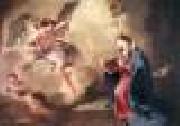 |
PITTONI, Giambattista -- Click Here
|
|
Italian Rococo Era Painter, 1687-1767
Italian painter and draughtsman. With Giambattista Tiepolo and Piazzetta, he was the most representative history painter of the Venetian Rococo. Besides altarpieces for Venetian and other churches as well as devotional images for private clients on both sides of the Alps, he painted subjects from mythology and Classical literature for collectors and connoisseurs in a Rococo idiom all his own; it is these secular pictures for which he is best known. Zava Boccazzi's catalogue raisonn of Pittoni's paintings (1979) includes 247 extant autograph works and 117 paintings now lost, destroyed or untraced. Binion's catalogue raisonn? of the artist's drawings (1983) lists 304 sheets. Pittoni's total output must have been far larger, as is evident from the drawings, many of which are studies for unknown works. For instance, Pittoni must occasionally have painted decorations for secular buildings and palazzi, probably in fresco, though none has yet come to light, with the notable exception of the few frescoes with scenes from the Life of Diana, painted in 1727 in the palazzetto Widman in Bagnoli di Sopra near Padua. |
|
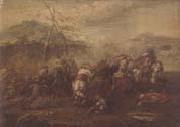 |
Pietro Graziani -- Click Here
|
|
Active in Naples during the first half of the 18th Century
|
|
 |
Pieter van Gunst -- Click Here
|
|
Pieter Stevens Van Gunst
(1659 -1724 ) |
|
 |
Pieter Gysels -- Click Here
|
|
1621-1691
Flemish
Pieter Gysels Gallery
Flemish painter. He began his training in 1641, when he was already 20, with Antwerp painter Jan Boots. Houbraken assumed he was also apprenticed to Jan Breughel II, whose diary describes a painting completed in 1638 as a 'small wild boar somewhat touched up by Gys' ('een klein wilt verxken voor Gys wat geretosieert'). But it seems highly doubtful that, as van der Sanden claimed (Denuce, p. 155), 'Gys' refers to Pieter Gysels. In 1649 or 1650 he became a master in Antwerp's Guild of St Luke. It is not known whether he took on any pupils. On 13 November 1650 he married Joanna Huybrecht, who bore him six children.
|
|
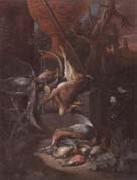 |
Pieter Gijsels -- Click Here
|
|
Flemish painter (b. 1621, Antwerpen, d. 1690, Antwerpen |
|
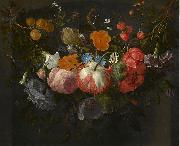 |
Pieter Gallis -- Click Here
|
|
(1633, Enkhuizen - 1697, Hoorn), was a Dutch Golden Age painter.
According to Houbraken, he painted as a hobby, since he earned his living as the director of the local pawn shop (Bank van Lening).He specialized in landscapes, flowers, fruit and other forms of still life. He was a very friendly man, especially to artists and art collectors.
He was active in Enkhuizen (and perhaps Amsterdam), in Purmerend from 1679-1683, and in Hoorn from 1683 until his death. |
|
 |
Pieter de Grebber -- Click Here
|
|
(c. 1600, Haarlem - 1652/3, Haarlem) was a Dutch Golden Age painter.
De Grebber was the oldest son of Frans Pietersz de Grebber (1573 - 1643), a painter and embroiderer in Haarlem, and the brother of the painters Maria and Albert. He learned to paint from his father and from Hendrick Goltzius. He was descended from a Catholic and artistic family and his sister Maria later became the mother-in-law of Gabriel Metsu. He was a friend of the priest and musicologist Jan Albertszoon Ban, and had a poem set to music by the Haarlem composer Cornelis Padbrue. In 1632 he became a member of the Haarlem Guild of St. Luke, but he had already been active as a painter for 10 years. His pupils were Gerbrand Ban, Nicolaes Pietersz Berchem, Egbert van Heemskerck, and Dirck Helmbreeker.
In 1618, father and son went to Antwerp and negotiated with Peter Paul Rubens over the sale of his painting "Daniel in the lions pit". It was then handed - via the English ambassador in the Republic, Sir Dudley Carleton - to king Charles I. Pieter got important commissions not only in Haarlem, but also from the stadholder Frederik Hendrik. As such, he worked on the decoration of the Huis Honselaarsdijk in Naaldwijk and at the Paleis Noordeinde in Huis ten Bosch in the Hague. He painted altar pieces for churches in Flanders and hidden Catholic churches in the Republic. He may also have worked for Danish clients.
Pieter remained single and lived from 1634 until his death at the Haarlem Beguinage.
|
|
 |
Pieter de Grebber -- Click Here
|
|
1600-1653
Dutch
Pieter de Grebber Gallery
Grebber was the son of Frans Pietersz de Grebber (1573?C1643), a painter and embroiderer in Haarlem, and would have been taught painting by his father and by Hendrick Goltzius. He was descended from a Catholic and artistic family (2 of his brothers, and his sister Maria, the mother-in-law of Gabriel Metsu, were known as painters). He was friendly with the priest and musicologist Jan Albertszoon Ban, and had a poem set to music by the Haarlem composer Cornelis Padbru??.
In 1618, father and son went to Antwerp and negotiated with Peter Paul Rubens over the sale of his painting "Daniel in the lions pit". It was then handed - via the English ambassador in the Republic, Sir Dudley Carleton - to king Charles I. Pieter got important commissions not only in Haarlem, but also from the stadholder Frederik Hendrik. As such, he worked with on the decoration of the Huis Honselaarsdijk in Naaldwijk and at the Paleis Noordeinde in Huis ten Bosch in the Hague. He painted altar pieces for churches in Flanders and hidden Catholic churches in the Republic. He may also have worked for Danish clients.
|
|
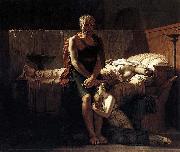 |
Pierre-Narcisse Guerin -- Click Here
|
|
(13 May 1774 - 6 July 1833) was a French painter.
Guerin was born in Paris.
A pupil of Jean-Baptiste Regnault, he carried off one of the three grands prix offered in 1796, in consequence of the competition not having taken place since 1793. In 1799, his painting Marcus Sextus (Louvre) was exhibited at the Salon and excited wild enthusiasm. Part of this was due to the subject - a victim of Sulla's proscription returning to Rome to find his wife dead and his house in mourning - in which an allusion was found to the turmoil of the French Revolution.
Guerin on this occasion was publicly crowned by the president of the Institute, and went to Rome to study under Joseph-Benoît Suvee. In 1800, unable to remain in Rome on account of his health, he went to Naples, where he painted the Grave of Amyntas. In 1802 Guerin produced Phaedra and Hippolytus (Louvre); in 1810, after his return to Paris, he again achieved a great success with Andromache and Pyrrhus (Louvre); and in the same year also exhibited Cephalus and Aurora (Louvre) and Bonaparte and the Rebels of Cairo (Versailles). These paintings suited the popular taste of the First Empire, being highly melodramatic and pompously dignified.
The Restoration brought to Guerin fresh honours; he had received from the first consul in 1803 the cross of the Legion of Honour, and in 1815 Louis XVIII named to the Academie des Beaux-Arts. His style changed to accord with popular taste. In Aeneas Relating to Dido the Disasters of Troy (Louvre), Guerin adopted a more sensuous, picturesque style.
Guerin was commissioned to paint for the Madeleine a scene from the history of St Louis, but his health prevented him from accomplishing what he had begun, and in 1822 he accepted the post of director of the French Academy in Rome, which in 1816 he had refused. On returning to Paris in 1828, Guerin, who had previously been made chevalier of the order of St. Michel, was ennobled. He now attempted to complete Pyrrhus and Priam, a work which he had begun at Rome, but in vain; his health had finally broken down, and in the hope of improvement he returned to Italy with Horace Vernet. Shortly after his arrival at Rome Baron Guerin died, on the 6th of July 1833, and was buried in the church of La Trinite de Monti by the side of Claude Lorrain.
|
|
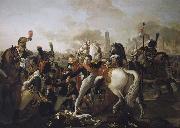 |
Pierre Gautherot -- Click Here
|
|
painted Napoleon Ier, blesse au pied devant Ratisbonne, est soigne par le chirurgien Yvan, 23 avril 1809 |
|
 |
Pierre Francois Eugene Giraud -- Click Here
|
|
painted Gustave Flaubert vers in 1856 |
|
 |
Pier Leone Ghezzi -- Click Here
|
|
(Rome, 28 June 1674 - Rome, 6 March 1755) was an Italian Rococo painter and caricaturist active in Rome.
Caricature of composer Antonio Vivaldi by Pier Leone GhezziGhezzi was born in Rome. His father, Giuseppe Ghezzi, (1634-1721), also trained Antonio Amorosi, and was a secretary to the Roman Accademia di San Luca. Pier Leone himself joined the Academy in 1705 and he executed a painting, the Allegory of Gratitude, to be donated to the institution, as was customary.
He was the godson of Carlo Maratta. Pier Leone is known for his frescoes in the Villa Falconieri of Frascati.
His pen and gouache caricatures are much freer in emotion than his state portraiture, and often depict named individuals or professions in satirical fashion.
|
|
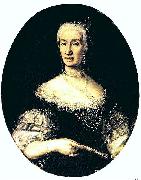 |
Pier Francesco Guala -- Click Here
|
|
(15 September 1698 - 27 February 1757), also known as Pierfrancesco and Pietro Francesco, was an eighteenth-century Italian painter active for the most part in the region of his place of birth, Casale Monferrato.
Guala was the seventh of eight siblings of whom only he and a sister survived infancy. His mother died when he was five and he was brought up by his father, Lorenzo, who himself was a painter and perhaps related to the architect Sebastiano Guala.
Pier Francesco Guala died in Milan on 27 February 1757.
|
|
 |
PIAZZETTA, Giovanni Battista -- Click Here
|
|
Italian Rococo Era Painter, ca.1683-1754 |
|
|
|
 |
Peter Graham -- Click Here
|
|
painted Spate in the Highlands e1868 |
|
 |
PENCZ, Georg -- Click Here
|
|
German Northern Renaissance Painter, ca.1500-1550
German painter, draughtsman and engraver. He arrived in Nuremberg in 1523 and entered Albrecht D?rer's workshop. On 12 January 1525 he was imprisoned with the brothers Barthel Beham and Sebald Beham and charged with disseminating the radical views of Thomas M?ntzer (c. 1490-1525) concerning religion and government. The council banished them from Nuremberg, but, after an appeal and intercession by Graf Albrecht von Mansfeld, Pencz was sent to nearby Windsheim, and on 16 November all three were pardoned, though placed under orders regarding their future behaviour. |
|
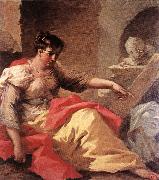 |
PELLEGRINI, Giovanni Antonio -- Click Here
|
|
Italian Rococo Era Painter, 1675-1741
Italian painter. With Sebastiano Ricci and Jacopo Amigoni he was the most important Venetian history painter of the early 18th century. By uniting the High Renaissance style of Paolo Veronese with the Baroque of Pietro da Cortona and Luca Giordano, he created graceful decorations that were particularly successful with the aristocracy of central and northern Europe. He travelled widely, working in Austria, England, the Netherlands, Germany and France. |
|
|
|
 |
Paul-Camille Guigou -- Click Here
|
|
1834-1871
French
Paul Camille Guigou Gallery
French painter. Born into a family of landowners, he became a notary's clerk at Apt in 1851 and then in 1854 at Marseille. He learnt to paint with Camp, a teacher at the school in Apt, and then at Marseille with Emile Loubon (1809-63), director of the local Ecole des Beaux-Arts, who urged him (according to Guigou's biographers) to paint directly from nature. Guigou settled in Marseille in 1854, where he participated regularly in the annual Salon of the Societe Artistique des Bouches-du-Rhene. Guigou painted almost exclusively Proven?al landscapes, which were influenced by the works of the Barbizon painters, who exhibited in Marseille, and by the brownish tones and picturesque figures of Loubon's paintings. The Road to Gineste (1859) and The Washerwoman (1860; both Paris, Mus. d'Orsay) reflect the independent tradition of Proveneal painting during the Second Empire, which was characterized by warm colouring and precise lighting used to separate and distinguish forms. His knowledge of the works of Gustave Courbet, acquired during a visit to Paris in 1859, doubtless increased his liking for broad technique and sincere vision, articulated in a strong and ordered construction of space: for example, The Gorges of the Luberon (c. 1861; Amiens, Mus. Picardie). |
|
 |
Paul Gauguin -- Click Here
|
|
French
1848-1903
Paul Gauguin Art Locations
(born June 7, 1848, Paris, France ?? died May 8, 1903, Atuona, Hiva Oa, Marquesas Islands, French Polynesia) French painter, sculptor, and printmaker. He spent his childhood in Lima (his mother was a Peruvian Creole). From c. 1872 to 1883 he was a successful stockbroker in Paris. He met Camille Pissarro about 1875, and he exhibited several times with the Impressionists. Disillusioned with bourgeois materialism, in 1886 he moved to Pont-Aven, Brittany, where he became the central figure of a group of artists known as the Pont-Aven school. Gauguin coined the term Synthetism to describe his style during this period, referring to the synthesis of his paintings formal elements with the idea or emotion they conveyed. Late in October 1888 Gauguin traveled to Arles, in the south of France, to stay with Vincent van Gogh. The style of the two men work from this period has been classified as Post-Impressionist because it shows an individual, personal development of Impressionism use of colour, brushstroke, and nontraditional subject matter. Increasingly focused on rejecting the materialism of contemporary culture in favour of a more spiritual, unfettered lifestyle, in 1891 he moved to Tahiti. His works became open protests against materialism. He was an influential innovator; Fauvism owed much to his use of colour, and he inspired Pablo Picasso and the development of Cubism.
|
|
 |
PANNINI, Giovanni Paolo -- Click Here
|
|
Italian Neoclassical Painter, ca.1691-1765
was an Italian painter and architect, mainly known as one of the vedutisti or (veduta, or "view painters"). As a young man, Pannini trained in his native town of Piacenza as a stage designer. In 1711, he moved to Rome, where he studied drawing with Benedetto Luti and became famous as a decorator of palaces, including the Villa Patrizi (1718C1725) and the Palazzo de Carolis (1720). As a painter, Pannini is best known for his vistas of Rome, in which he took a particular interest in the city's antiquities. Among his most famous works are the interior of the Pantheon, and his vedute paintings of picture galleries containing views of Rome. Most of his works, specially those of ruins have a substantial fanciful and unreal embellishment characteristic of capriccio themes. In 1719, Pannini was admitted to the Congregazione dei Virtuosi al Pantheon. He taught in Rome at the Accademia di San Luca and the Academie de France, where he influenced Jean-Honore Fragonard. His studio included Hubert Robert and his son Francesco Panini. His style would influence a number of other vedutisti, such as his pupil Antonio Joli, as well as Canaletto and Bernardo Bellotto, |
|
 |
Panini, Giovanni Paolo -- Click Here
|
|
Italian Neoclassical Painter, ca.1691-1765
Italian painter, architect and stage designer. He was a highly prolific and versatile painter, best known for his numerous vedute of Rome, many of which focused on the remnants of the city's Classical past. Ceremonies and festivals often feature in his vedute, which thus constitute a lively documentation of contemporary topography, lifestyle and customs. In contrast to Bernardo Bellotto and Gaspar van Wittel, his treatment is picturesque rather than rigorous; he liked to enliven and animate his views by adding numerous figures. He worked exclusively in Rome and by the end of his career was the head of a thriving workshop that included the Frenchman Hubert Robert (in Rome from 1754) and Panini's son Francesco Panini (b 1738). |
|
 |
PALMERINO DI GUIDO -- Click Here
|
|
Italian painter
active around 1300 |
|
 |
PALMA GIOVANE -- Click Here
|
|
Italian Mannerist Painter, ca.1548-1628
Son of Antonio Palma. A greater artist than his father, his vast oeuvre represents the impact of central Italian Mannerism but principally of Jacopo Tintoretto on Venetian painting in the generation after Titian, Tintoretto and Paolo Veronese. He died in his late seventies and was occasionally referred to as 'il vecchio', but since the 17th century he has been known as 'il giovane' to distinguish him from his great uncle. He was virtually self-taught, apart from a presumed acquaintance with his father's workshop. In 1567 he came to the attention of Guidobaldo II della Rovere, Duke of Urbino, who was to support him for four years. A possible knowledge of Federico Barocci's art at the court of Urbino left little trace on his surviving early works. The Duke sent him to Rome for study, where he spent a few months apprenticed to an unknown artist. There his sympathy was with Taddeo Zuccaro and Federico Zuccaro, who influenced the graphic style of the drawing of Matteo da Lecce (1568; New York, Pierpont Morgan Lib.), his first dated work. His Roman sojourn, which lasted until c. 1573-4, made a direct impact on some of his Venetian works and indirectly made him receptive to Tintoretto's style. A tendency in Rome in the 1560s to retreat from the most artificial and decorative aspects of Mannerism in favour of naturalism was also to affect Palma's attitude to style in his mature works |
|
 |
Paggi, Giovanni Battista -- Click Here
|
|
Italian Baroque Era Painter, 1554-1627
.Italian painter and theorist. As the son of a newly inscribed nobleman, he received a Renaissance gentleman's education, but as an artist he was it seems self-taught, despite the encouragement of Luca Cambiaso. The gentleman who then set up as a painter was obliged to give his work to patrons, sometimes expecting future remuneration; but when one patron reneged on payment in 1581, Paggi mortally wounded him and was banished from Genoa. He was given protection by Francesco I de' Medici, Grand Duke of Tuscany, and settled in Florence. A fresco of St Catherine Converting Two Criminals (1582), painted for Niccol? Gaddi's family chapel at S Maria Novella and thoroughly Florentine in manner, established Paggi's reputation at the Medici court. He painted ephemeral decorations, portraits (all untraced) and altarpieces for many Florentine churches and for the cathedrals of San Gimignano (c. 1590), Pistoia (1591-3) and Lucca (1597-8), |
|
 |
Pagani, Gregorio -- Click Here
|
|
Italian, 1558-1605
Italian painter. He trained in the studio of the Late Mannerist Maso da San Friano, but then studied with the more progressive Santi di Tito. There he became friends with Ludovico Cigoli: the two artists, who desired to renew the art of painting, studied from nature and developed an interest in Venetian and Emilian art. Pagani was deeply influenced by Correggio. His earliest surviving works include the frescoes of the Confirmation of the Rule of St Dominic (c. 1580; Florence, S Maria Novella, Chiostro Grande) and the Meeting between SS Dominic and Francis (Florence, Convento dei Cappuccini di Monturghi). In 1592 he painted the Virgin and Saints (St Petersburg, Hermitage), a work that already reveals his interest in Correggio. In the same year he painted a Finding of the True Cross (untraced), a daring composition that is preserved in preparatory drawings. A number of works from the 1590s survive and show Pagani's interest in Emilian art; the Crucifixion and Saints (1595; Florence, S Bartolomeo in Pozzo) and the Virgin and Child with SS Michael the Archangel and Benedict (1595; Florence, S Michele Arcangelo Le Ville). At the turn of the century Pagani was increasingly associated with those Florentine artists who wished to develop a new narrative clarity and directness. His pictures (e.g. Pyramus and Thisbe; Florence, Uffizi) show figures carefully posed with varied expressions and gestures. In the early 17th century Pagani became yet more attracted by naturalism, as in the St Lawrence (1600) in the basilica of the Madonna delle Grazie at San Giovanni, Valdarno. Through his friendship with Bartolomeo Carducho he was influenced by Spanish art, as is evident in the Adoration of the Magi |
|
 |
Otto Greiner -- Click Here
|
|
painted Prometheus in 1909 |
|
 |
Orazio Gentileschi -- Click Here
|
|
1563-1639 Italian Orazio Gentileschi Galleries Tuscan painter, b. Pisa. His real surname was Lomi, but he adopted his uncle name. He studied in Rome, where he was associated with Agostino Tassi in the decoration of palace interiors. Influenced by Caravaggio, Gentileschi developed a more softly luminous light and a cooler, more lyrical style. He also painted frescoes in Santa Maria Maggiore and in the Lateran. After spending several years in Genoa and in France, he settled in England (1626) at the invitation of Charles I. Gentileschi principal works include The Annunciation (San Siro, Genoa); Flight into Egypt (Louvre); Sibyl (Hampton Court, England); and Moses Saved from the Waters (Prado). He also painted numerous portraits. Artemesia Gentileschi was his daughter. |
|
 |
Oliver Dennett Grover -- Click Here
|
|
American, 1861-1927 |
|
 |
Norman Garstin -- Click Here
|
|
(28 August 1847 ?C 22 June 1926) was an Irish artist associated with the Newlyn School of painters.
He was born in Caherconlish, Co. Limerick, Ireland, and was involved in various professions such as journalism and gold mining in South Africa. In 1885 he befriended members of the Newlyn School and settled there a year later, moving to nearby Penzance in 1890.
The Rain it Raineth Every Day 1889His work consisted primarily of small oil panels in the plein air style, something he had picked up from the French Impressionists such as Edouard Manet and Edgar Degas. |
|
 |
Norbert Goeneutte -- Click Here
|
|
French Painter, 1854-1894.French painter and engraver. In 1871, after working briefly as a lawyers clerk, he entered the studio of Isidore Pils at the Ecole des Beaux-Arts. When Pils died in 1875 Henri Lehmann took over the studio and Goeneutte left, moving to Montmartre. There he met Auguste Renoir, for whom he often modelled, and Marcellin Desboutin, who inspired his interest in engraving, etching and drypoint. Although Goeneutte was associated with Manet, Degas and Renoir, and his work was influenced by them, for instance in the informality of his compositions, he never exhibited with the Impressionist group, preferring instead the official Salons. Every year from 1876 he exhibited several works in the Paris Salon, such as Boulevard de Clichy under Snow (1876; London, Tate). He visited London in 1880, Rotterdam in 1887 and Venice in 1890. |
|
 |
Norbert Goeneutte -- Click Here
|
|
1854-1894
French
French painter and engraver. In 1871, after working briefly as a lawyer's clerk, he entered the studio of Isidore Pils at the Ecole des Beaux-Arts. When Pils died in 1875 Henri Lehmann took over the studio and Goeneutte left, moving to Montmartre. There he met Auguste Renoir, for whom he often modelled, and Marcellin Desboutin, who inspired his interest in engraving, etching and drypoint. Although Goeneutte was associated with Manet, Degas and Renoir, and his work was influenced by them, for instance in the informality of his compositions, he never exhibited with the Impressionist group, preferring instead the official Salons. Every year from 1876 he exhibited several works in the Paris Salon, such as Boulevard de Clichy under Snow (1876; London, Tate). He visited London in 1880, Rotterdam in 1887 and Venice in 1890. |
|
 |
Nittis, Giuseppe de -- Click Here
|
|
Italian, 1846-84
Italian painter, pastellist and printmaker. Throughout his career he was committed to a plein-air aesthetic and was particularly interested in rendering varying light effects, a concern that brought him into contact with the Impressionists. He was also acquainted with the members of the Macchiaioli, for whom his work was influential. In addition to oils, he experimented with printmaking and made innovative use of pastels. Practising a restrained, and therefore 'acceptable', form of Impressionism, he achieved great success in his lifetime, |
|
 |
nikolay gogol -- Click Here
|
|
With the works of the Russian author Nikolai Gogol (1809-1852) the period of Russian imitation of Western literature ended. He found inspiration in native materials and combined realistic detail with grotesque and otherworldly elements. |
|
 |
Nikolaj Nikolajewitsch Ge -- Click Here
|
|
painted Conscience, Judas in 1891 |
|
 |
Nikolai Ge -- Click Here
|
|
1831 C 13 June [O.S. 1 June] 1894) was a Russian realist painter famous for his works on historical and religious motifs.
Nikolai Ge was born in Voronezh to a Russian noble family of French origin. His grandfather emigrated to Russia in the 18th century. His parents died when he was still a child, so Nikolai was raised by his serf nurse. He graduated from the First Kiev Gymnasium and studied at the physics-mathematics department of Kiev University and Saint Petersburg University.
In 1850 he gave up his career in science and entered the Imperial Academy of Arts in Saint Petersburg. He studied in academy under the historical painter Pyotr Basin until 1857. He graduated from the academy in 1857 with a gold medal for his painting The Witch of Endor Calling Up the Spirit of the Prophet Samuel. According to Ge himself, during that period he was strongly influenced by Karl Brullov.
His gold medal provided him a scholarship for studying abroad . He visited Germany, Switzerland, France and in 1860 settled in Italy. In Rome he met Alexander Andreyevich Ivanov who strongly influenced Ge. In 1861 Ge painted The Last Supper; in 1863 he took the painting with him to Saint Petersburg. Ge found his own interpretation of the classical subject ?? he emphasized the motif of discord among those who had formerly shared the same views. The painting (bought by Tsar Alexander II of Russia) made so strong impression that Ge was made a professor of Imperial Academy of Arts.
In 1864 he returned to Florence where he became a friend of a major Russian pro-Western writer and thinker Alexander Herzen and painted his portrait. The same year he also painted Messengers of the Resurrection and the first version of the Christ on the Mount of Olives. |
|
 |
Nicolae Grigorescu -- Click Here
|
|
Romanian Painter, 1838-1907
From 1848 he trained in Bucharest with various church painters, producing icons and religious mural decorations. These works, which soon attracted attention, were influenced in style by the Viennese classicism widespread in the Romanian principalities in the early 19th century and by the Italian academicism established there after 1850 by Gheorghe Tattarescu. The earliest of his known paintings are in the church of SS Constantin and Elena at Baicoi, where his signature can be seen beside that of Nita Pereescu on the icon of St George (1853). He subsequently painted a series of icons (1854-5) at Caldarusani Monastery. In the later ensembles he was assisted by his older brother Georghe Grigorescu, who participated under his direction in the decoration of churches, such as those of the Zamfira (1856-8) and Agapia (1858-60) monasteries. In Nicolae's paintings at Agapia, classicism in Romanian art reached its highest point. The royal icons are distinguished for the elegance of the figures, both in their attitudes and in their drapery. |
|
 |
Niccolo di Pietro Gerini -- Click Here
|
|
Italian Painter, active ca.1368-1415
died in Florence in 1415, earned reputation of an important Italian painter. He represents giottesque school, in the tradition of the Andrea di Orcagna (1320-1368) and of Taddeo Gaddi. His father Pietro Geri is registered as a member of Lucas Guild in 1339. Niccolo worked mainly in Florence, although he also carried out commissions in Rome (Vatican), Pisa and Prato.
He was first recorded in 1368 as a member of the Arte dei Medici e Speziali in Florence but is identifiable with the Niccolo dipintore who collaborated with Jacopo di Cione on frescoes for the Guildhall of the Judges and Notaries in Florence in 1366. It is self-evident that he is the Niccolaio dipintore who worked with Jacopo di Cione on the altarpiece of the Coronation of the Virgin (presently in London, National Gallery) for St Pier Maggiore, Florence in 1370 and was paid 12 golden florins per disegnare la tavola dell altare in November of the same year. He designed the altarpiece and the elaborate throne canopy with his usual fine painting and detailed ornaments whilst Jacopo di Cione was depicting side saints. This altarpiece is amongst of very few largest commissioned in 14th century Florence. It was seemingly commissioned by Albizzi family.
He was collaborating with Jacopo di Cione on Coronation of the Virgin (Accademia, Florence) in 1372. Offner and Steinweg suggest that he was responsible for the design and fine painting and Jacopo for the execution of saints. It was commissioned by the mint of Florence Zecca Vecchia on the same year.
In 1383 Gerini again worked with Cione on a fresco of the Annunciation in the Palazzo dei Priori, Volterra. This fresco clearly shows the work of two very different artists: Niccolo di Pietro Gerini (design and very fine painting) and Jacopo di Cione (broadly painted saints and side decoration). In 1386 Niccolo frescoed the façade of the Bigallo, Florence. He also frescoed Sant Ambrogio church in Florence
Gerini performed the Crocefissione of St Felicita church in Florence.
His hand is clearly on sacrestia of the basilica of Saint Croce to Florence with Scenes of the life of Christ. Between 1391 and 1392 he worked in Prato where he frescoed Palazzo Datini, church of Saint Francisco with Lorenzo di Niccolo and Agnolo Gaddi.
He also frescoed capitolare of the church of Saint Francisco, Pisa.
Very typically for Gothic depiction Gerini figures have large chins, sloping foreheads, and sharp noses whilst their bodies are squat and frontally displaced.
Another important artist Lorenzo di Niccol?? di Martino was trained in Niccol?? di Pietro Gerini workshop and later collaborated with the master but was not his son as sometimes erroneously stated. Gerini though had a son Bindo di Niccolo di Pietro Gerini, born in 1363, who is registered as member of Lucas Guild since 1408.
Niccolo di Pietro Gerini works can be found in major art galleries of Rome, Vatican, Florence, London, Milan, New York, Los Angeles, Amsterdam, Berlin, Paris, St Petersburg, Boston, Cambridge, Budapest, Birmingham, Pegalo, Prato, Pisa, Altenburg, Avignon, Denver and several other museums. |
|
|
|
|
|
 |
natalia goncharova -- Click Here
|
|
natalia goncharova(1881 to 1962),Russian painter, stage designer, printmaker and illustrator. She was a leading artist of the Russian avant-garde in the early 20th century but became a celebrity in the West through her work for SERGE DIAGHILEV and the BALLETS RUSSES. During the 1920s she played a significant role within the Ecole de Paris and continued to live and work in France until her death.
|
|
 |
Naldini, Giovanni Battista -- Click Here
|
|
Italian, 1537-91
was an Italian painter of a late-Mannerism in Florence. His first apprenticeship (1549-57) was in the studio of Jacopo Pontormo. He went from Rome for a number of months following 1560, and was recruited to work for Giorgio Vasari in 1562. He painted two crowded, mannerist canvas for the Studiolo of Francesco I in the Palazzo Vecchio: the Allegory of Dreams and the Gathering of Ambergris. He supplied altarpieces to Santa Maria Novella and Santa Croce. He painted an altarpiece of Calling of Saint Matthew for the Salviati Chapel in San Marco, where he worked alongside Francesco Morandini. Ultimately, he is aptly described by Freedberg as displaying work distantly derivative from the style of Andrea del Sarto, as expressed by Naldini's two mentors and Sarto's two pupils: Pontormo and Vasari. |
|
 |
MOSTAERT, Gillis -- Click Here
|
|
Flemish painter (b. ca. 1534, Hulst, d. 1598, Antwerp) |
|
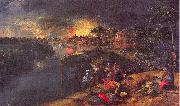 |
Mossa, Gustave Adolphe -- Click Here
|
|
Flemish, 1534-1598 |
|
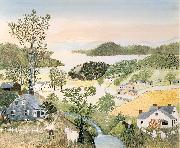 |
Moses, Grandma -- Click Here
|
|
1948
Oil on pressed wood. |
|
 |
Morphy, Garret -- Click Here
|
|
Irish, Active 1676-1716 |
|
 |
MORONI, Giovanni Battista -- Click Here
|
|
Italian Mannerist Painter, ca.1520-1578
.Italian painter. He was the most significant painter of the 16th-century school of Bergamo and is best known for his portraits, which feature a naturalistic rendering of both faces and costume and an objective approach to character. |
|
 |
mikhail glinka -- Click Here
|
|
Period: Romantic (1820-1869)
Country: Russia
Born: June 01, 1804 in Novospasskoye, Smolensk, Russia
Died: February 15, 1857 in Berlin, Germany
Genres: Chamber Music, Keyboard Music, Miscellaneous Music, Opera, Orchestral Music, Vocal Music
|
|
 |
MIJN, George van der -- Click Here
|
|
Flemish Painter, 1719-1783 |
|
 |
Michel Gobin -- Click Here
|
|
painted Junger Mann mit Pfeife in 1681 |
|
 |
METSU, Gabriel -- Click Here
|
|
Dutch painter (b. 1629, Leiden, d. 1667, Amsterdam). |
|
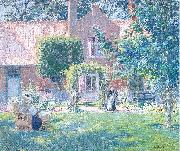 |
Melchers, Gari Julius -- Click Here
|
|
American Painter, 1860-1932 |
|
 |
MAZZOLA BEDOLI, Girolamo -- Click Here
|
|
Italian painter, Parma school (b. 1500, Viadana, d. ca. 1569, Parma) |
|
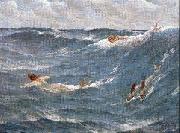 |
Maynard, George Willoughby -- Click Here
|
|
American, 1843-1923
American figure, marine, and mural painter, b. Washington, D.C., studied at the National Academy of Design and in Florence and Antwerp. Maynard created decorations for the Library of Congress and the old Metropolitan Opera House, New York City. |
|
 |
Max, Gabriel Cornelius von -- Click Here
|
|
Czechoslovakian, 1840-1915
Painter, illustrator and teacher, nephew of (1) Emanuel Max. He studied at the Academy of Fine Arts, Prague (1855-8), and the Akademie der Bildenden K?nste, Vienna (1858-61), and under Karl Theodor von Piloty at the Akademie der Bildenden K?nste, Munich (1863/4-7). He settled in Munich, where he opened a private school of painting in 1869. His paintings and book illustrations of the second half of the 1860s show an affinity with the late Romanticist movement. He illustrated works of German literature by Wieland, Lenau and Schiller, as well as producing illustrations for Goethe's Faust (1867-8; Prague, N.G., Kinsky Palace). As well as literary and even musical sources, religious themes frequently occur in his work, including his first great success, the Crucifixion of St Julie (1867; ex-Sotheby's, London, 1976). In numerous female figures and portraits Max explored the tension between the inner state and the charm of the physical appearance or surroundings of his subjects. His interest in the artistic perception of relationships between physical reality and the spiritual world led him to a study of anthropology and contemporary occultism and mysticism, as in his portraits of the Seer of Prevorst |
|
 |
Maurycy Gottlieb -- Click Here
|
|
Drohobytsch, February 21/28, 1856 - Krakew, July 17, 1879) was a Jewish painter, of Polish-speaking Galician Jews from the western part of Ukraine. He was born in Drohobych (at that time Austria-Hungary), Galicia, modern Lviv region, western Ukraine.
Maurycy was one of Isaac and Fanya Tigerman Gottlieb's eleven children. At fifteen, he was enrolled at the Vienna Fine Arts Academy. Later, he would study under Jan Matejko in Krakew. However, he experienced anti-semitism from his fellow students, and left Matejko's studio after less than a year, he then traveled to Norway settling in Molde. After several years he returned to Vienna to pursue his Jewish roots.
At twenty, he won a gold medal from a Munich art competition for Shylock and Jessica (at right), showing a scene from Shakespeare's The Merchant of Venice. He based Jessica's face on that of Laura Rosenfeld, to whom he had proposed marriage. However, Rosenfeld rejected his proposal, and wed a Berlin banker. Gottlieb then planned to marry Lola Rosengarten, but when he heard about Rosenfeld's marriage he committed suicide by exposure to the elements, dying of complications from a cold.
Despite his early death, more than three hundred of his works survive, though not all are finished. After the fall of the Iron Curtain, many Polish collections unknown in the West were discovered, and his reputation grew greatly.
His brother, painter Leopold Gottlieb, was born five years after his death.
|
|
 |
Maurice Galbraith Cullen -- Click Here
|
|
Maurice Galbraith Cullen (1866-1934) was a Canadian artist.
Cullen was born June 6, 1866 in St. John's, Newfoundland.
Beginning in January 1918, Cullen served with Canadian forces in the First World War. He came to the attention of Lord Beaverbrook, who arranged for him to be commissioned as an "official war artist" along with Frederick Varley, J.W. Beatty and C. W. Simpson. |
|
 |
Matthieu, Georg David -- Click Here
|
|
German, 1737-1778
German painter and engraver. He received his training as a painter from his father, the Prussian court painter David Matthieu (1697-1755), and his stepmother and aunt, the painter Anna Rosina Lisiewska (1713/16-83). He apparently travelled outside Germany and is known to have gone to Stralsund with the painter Philipp Hackert in 1762. His portraits from this period, including one of Princess Charlotte of Mecklenburg-Strelitz, who married King George III of England, |
|
 |
Matthias Grunewald -- Click Here
|
|
German Northern Renaissance Painter, ca.1470-1528,was an important German Renaissance painter of religious works, who ignored Renaissance classicism to continue the expressive and intense style of late medieval Central European art into the 16th century. Only ten paintings (several consisting of many panels) and thirty-five drawings survive, all religious, although many others were lost at sea in the Baltic on their way to Sweden as war booty. His reputation was obscured until the late nineteenth century, and many of his paintings were attributed to Albrecht D??rer, who is now seen as his stylistic antithesis. His largest and most famous work is the Isenheim Altarpiece in Colmar, Alsace (now in France). The details of his life are unusually unclear for a painter of his significance at this date, despite the fact that his commissions show that he had reasonable recognition in his own lifetime. His real name remains uncertain, but was definitely not Grunewald; this was a mistake by the 17th-century writer, Joachim von Sandrart, who confused him with another artist. He is documented as "Master Mathis" or "Mathis the Painter" (Mathis der Maler), and as using as surname both Gothart and Neithardt - this last may have been his surname, or more likely that of his wife. He was probably born in Wurzburg in the 1470s. It is possible he was a pupil of Hans Holbein the Elder. From about 1500 he seems to have lived at Seligenstadt, when not working elsewhere. His first dated painting is probably in Munich, dated 1503 on a much later note which apparently records an older inscription. From about 1510 to 1525 he served in the Rhineland as court painter, |
|
 |
Matthias Grunewald -- Click Here
|
|
German
1475-1528
Matthias Grunewald Galleries
Only religious works are included in his small surviving corpus, the most famous being the Isenheim Altarpiece, completed 1515, now in the Musee d'Unterlinden, Colmar. Its nine images on twelve panels contain scenes of the Annunciation, Mary bathing Christ, Crucifixion, Entombment of Christ, Resurrection, Temptation of St. Anthony and saints. As was common in the preceding century, there are different views, depending on the arrangement of the wings; but the three views available here are exceptional. The third view discloses a carved and gilded wood altarpiece in the centre. As well as being by far his greatest surviving work, the altarpiece contains most of his surviving painting by area, being 2.65 metres high and over 5 metres wide at its fullest extent.
His other works are in Germany, except for a small Crucifixion in Washington and another in Basel, Switzerland. He was asked in about 1510 to paint four saints in grisaille for the outside of the wings of Durer's Heller Altarpiece in Frankfurt. D??rer's work was destroyed by fire and only survives in copies, but fortunately the wings have survived. There are also the late Tauberbischofsheim altarpiece in Karlsruhe, and the Establishment of the Santa Maria Maggiore in Rome (1517-1519), Freiburg, Augustinermuseum. A large panel of Saint Erasmus and Saint Maurice in Munich probably dates from 1521-24, and was apparently part of a larger altarpiece project, the rest of which has not survived. Other works are in Munich, Karlsruhe, and Rhineland churches. Altogether four somber and awe-filled Crucifixions survive. The visionary character of his work, with its expressive colour and line, is in stark contrast to Albrecht Durer's works. His paintings are known for their dramatic forms, vivid colors, and depiction of light. |
|
 |
Matthaus Gunther -- Click Here
|
|
the most prolific fresco painter of the eight- eenth century in central Europe.
German, 1705-1788
He was an important German painter and artist of the Baroque and Rococo era. Gunther helped develop the rococo style of painting in Bavaria and Tyrol, working on over 40 churches. His known work includes about 70 frescoes and 25 panels. In particular, he was known for his life-like imagery and lively coloring. Gunther studied in Munich from 1723 to 1728 with Cosmas Damian Asam, the older of the two Asam brothers, and perfected his fresco painting in Augsburg. He frequently worked with some of the greatest artists of his time, including the architect Johann Michael Fischer and the plasterer Johann Michael Feuchtmayer and his brother Franz Xaver. |
|
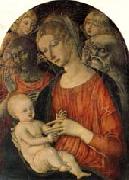 |
Matteo Di Giovanni -- Click Here
|
|
Italian Early Renaissance Painter, ca.1430-1495 |
|
 |
Master of the View of st Gudule -- Click Here
|
|
active in Brussels 1470-1490 |
|
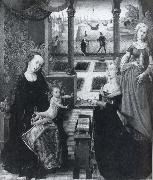 |
Master of the View of Sainte Gudule -- Click Here
|
|
Netherlandish Northern Renaissance Painter, active ca.1485 |
|
 |
master of St-Germain-des-Pres -- Click Here
|
|
originally from cologne active in Paris about 1500 |
|
 |
MASTER of Saint Gilles -- Click Here
|
|
French Painter, active ca.1500 |
|
 |
Master of Saint Giles -- Click Here
|
|
The Master of Saint Giles (French: Maître de Saint-Gilles) was a Franco-Flemish painter active, probably in Paris, about 1500, working in a delicate Late Gothic manner, with rendering of textures and light and faithful depictions of actual interiors that show his affinities with Netherlandish painting. It is not clear whether the Master of Saint Giles was a French painter who trained in the Low Countries (perhaps more likely), or a Netherlander who emigrated to France.
His pseudonym was given him by Max Friedländer, who reconstructed part of the anonymous painter's oeuvre, starting from two panels devoted to Saint Giles (a Miracle and a Mass) in the National Gallery, London, that were part of the lefthand shutter of an altarpiece, and two further panels now in Washington from the same altarpiece. The hand of an assistant can be discerned in the Baptism of Clovis at the National Gallery of Art, Washington, who also have a panel with Episodes from the Life of a Bishop-Saint - perhaps Saint Leu, Saint Denis or Saint Remy. All four panels have, or had, single grisaille figures of saints (Saints Peter, Giles, Denis and an unidentified bishop-saint) in niches, imitating sculpture, on the reverse. The Washington pair, which were in poor condition, have been separated and are lost, although photographs exist. Undoubtedly there were further panels, whose subjects cannot be guessed, as the combination of scenes is original. |
|
1.jpg) |
MARTORELL, Bernat (Bernardo) -- Click Here
|
|
Spanish Early Renaissance Painter, ca.1400-1452 |
|
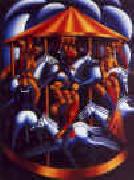 |
Mark Gertler -- Click Here
|
|
British
1891-1939
Mark Gertler Gallery
English painter. He was the son of Polish Jews and was brought up in Whitechapel in severe poverty until his father furrier workshop became moderately successful. As a child he knew nothing of art except advertisements and the work of pavement artists. He was 14 before he heard of any art institutions, and his career was determined by the discovery of W. P. Frith Autobiography in a secondhand bookshop. In 1906 he began attending art classes at the Regent Street Polytechnic in London, as well as a series of talks on Dutch and Flemish painting. His earliest still-lifes show the influence of Dutch 17th-century painting and the work of Chardin. Gertler left the Polytechnic for financial reasons in 1907 and apprenticed himself to Clayton and Bell, a firm of glass painters. In 1908 he won a prize in a national art competition and, on the strength of this, successfully applied for financial assistance from the Jewish Educational Aid Society, using William Rothenstein as a referee. That autumn he entered the Slade School of Fine Art, where he was taught by Henry Tonks and Philip Wilson Steer. He won several prizes and scholarships and fell in love with Dora Carrington. This and other friendships established at the Slade introduced him into a society that gave him a new perspective on his own family background. While writing delightedly to others of his nice friends among the upper classes, his paintings |
|
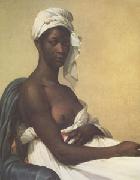 |
Marie-Guillemine Benoist -- Click Here
|
|
Paris 1768-1826
was a French neoclassical, historical and genre painter. She was born in Paris, the daughter of a civil servant. Her training as an artist began in 1781 under Élisabeth Vigee Le Brun, and she entered Jacques-Louis David's atelier in 1786 along with her sister Marie-Élisabeth Laville-Leroux. The poet Charles-Albert Demoustier, who met her in 1784, was inspired by her in creating the character Émile in his work Lettres Émilie sur la mythologie (1801). In 1791 she exhibited for the first time in the Salon de Paris, displaying her mythology-inspired picture Psych faisant ses adieux sa famille. Another of her paintings of this period, L'Innocence entre la vertu et le vice, is similarly mythological and reveals her feminist interests in this picture, vice is represented by a man, although it was traditionally represented by a woman. In 1793, she married the lawyer Pierre-Vincent Benoist. Her work, reflecting the influence of Jacques-Louis David, tended increasingly toward history painting by 1795. In 1800, she exhibited Portrait d'une negresse in the Salon. Six years previously, slavery had been abolished, and this image became a symbol for women's emancipation and black people's rights. This picture was acquired by Louis XVIII for France in 1818. An important commission, for a full-length portrait of Napol on Bonaparte Premier Consul Français in this period was awarded to her in 1803. This portrait was to be sent to the city of Ghent, newly ceded to France by the Treaty of Luneville in 1801. Other honors came to her; she was awarded a Gold Medal in the Salon of 1804, and received a governmental allowance. During this time she opened an atelier for the artistic training of women. Her career was harmed by political developments, however, when her husband, the convinced royalist count Benoist, was nominated in the Conseil d'État during the post-1814 monarchy come-back called the Bourbon Restoration. |
|
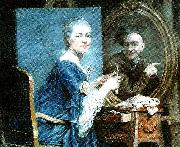 |
marie suzanne giroust roslin -- Click Here
|
|
Marie-Suzanne Giroust, född 9 mars 1734 i Paris, Frankrike, död 31 augusti 1772 i Paris, var en fransk konstnär, i huvudsak verksam inom pastellmåleri. Hon var gift med den svenske porträttmålaren Alexander Roslin från 1759 till sin död.
Dotter till Barthelemy Giroust och Marie Suzanne Leroy. När Giroust var sju år gammal, dog hennes far som var juvelerare. Fyra år senare dog även hennes mor, och hon flyttade in hos släktingar. Arvet efter fadern gav henne möjlighet att uppta målarstudier. Hon inledde sina studier hos Maurice Quentin de La Tour, men det var hos Joseph-Marie Vien hon kom att finna sig tillrätta. I Viens atelj?? träffade hon 1752 Alexander Roslin och blev förälskad. Girousts förmyndare kunde dock inte acceptera den svenske målaren som blivande make, då han var fattig och protestant.[1] Paret kämpade för sin kärlek, och Giroust vägrade att träffa de friare som hennes förmyndare föreslog för henne.[1] Efter medling av bland andra Roslins vän och beskyddare, Comte de Caylus, kunde Roslin och Giroust gifta sig, den 5 januari 1759. Paret Roslin fick mellan 1760 och 1772 sex barn, tre döttrar och tre söner, varav två döttrar och två söner nådde vuxen ålder.
Alexander Roslin erkände offentligen sin hustrus talang som konstnär, och han hävdade att hon var en skickligare pastellmålare än han själv. Giroust invaldes 1770 i den franska konstakademin, Acad??mie royale. 1771 utställde hon sitt porträtt av abb?? Lemonnier, som fick mycket beröm. Hon måladet i pastell.
Marie-Suzanne Giroust avled i bröstcancer i slutet av augusti 1772. |
|
 |
Marguerite Gerard -- Click Here
|
|
Marguerite Gerard (28 January 1761 in Grasse - 18 May 1837 in Paris) was a French painter and etcher. She was the daughter of Marie Gilette and perfumer Claude Gerard. At 8 years-old she became the sister-in-law of Jean-Honore Fragonard, and when she was 14 she became his pupil, and she often worked with him. She was also the aunt of the artist Alexandre-Évariste Fragonard. |
|
 |
margareta capsia gavelin -- Click Here
|
|
Margareta Capsia, född 1682 i Sverige, död 20 juni 1759 i Åbo, var en svensk-finländsk konstnär, den första kvinnliga konstnären i Finland och en av de första i Skandinavien. Hon var kyrkomålare och målade altartavlor, men utförde även personporträtt.
Capsias föräldrar Gottfried Capsia och Anna Schultz hade kommit till Sverige från Holland. Hon gifte sig i Stockholm 1719 med prästen Jacob Gavelin och flyttade till Vasa 1721, där hon gjorde sig känd som altarmålare i Österbotten. 1730 flyttade paret till Åbo, där hon blev känd i hela landet som konstnär. Hon målade altatavlorna i en rad kyrkor, bla målade hon 1739 Säkylä kyrkas altartavla, och i den gamla kyrkan i Paltamo, den så kallade bildkyrkan, finns bland annat en altartavla från 1727 som föreställer nattvarden. Hennes altartavlor beskrivs som individualistiska och naivt ärliga bibelillustrationer, och hon ansågs som landets då främsta altarkonstnärer tillsammans med Mikael Toppelius.
Hon var en av de få kvinnliga konstnärerna kända i Skandinavien före 1800-talet, tillsammans med Ulrika Pasch i Sverige och Johanne Marie Fosie i Danmark. I Finland var även Helena Arnell känd under samma tid. |
|
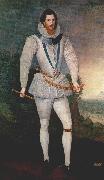 |
Marcus Gheeraertz the Younger -- Click Here
|
|
painted Robert Devereaux, Earl of Essex in 1596 |
|
 |
Marc Charles Gabriel Gleyre -- Click Here
|
|
Charles Gleyre (full name Marc Gabriel Charles Gleyre) (Chevilly, Vaud canton, 2 May 1806 - 5 May 1874), was a Swiss artist. He took over the studio of Paul Delaroche in 1843 and taught a number of younger artists who became prominent, including Claude Monet, Pierre Auguste Renoir, Alfred Sisley and James Abbott McNeill Whistler.
Self portraitHis father and mother died when he was eight or nine years of age; and he was brought up by an uncle in Lyon, France, who sent him to the industrial school of that city.
Going to Paris in his late teens, he spent four years in intense artistic study. The following four years Gleyre spent in meditative inactivity in Italy, where he became acquainted with Horace Vernet and Louis Leopold Robert; and six years more were spent wandering in Greece, Egypt, Nubia and Syria. At Cairo he was attacked with ophthalmia, or inflammation of the eye, and in Lebanon he was struck down by fever. He returned to Lyons in shattered health.
On his recovery he proceeded to Paris, and, establishing a modest studio in the rue de Universite, began carefully to work out the ideas which had been slowly shaping themselves in his mind. Mention is made of two decorative panels Diana leaving the Bath, and a Young Nubian as almost the first fruits of his genius; but these did not attract public attention until much later, and the painting by which he practically opened his artistic career was the Apocalyptic Vision of St John, sent to the Salon of 1840.
This was followed in 1843 by Evening, which at the time received a medal of the second class, and afterwards became widely popular under the title Lost Illusions. It depicts a poet seated on the bank of a river, with his head drooping and a wearied posture, letting his lyre slip from a careless hand, and gazing sadly at a bright company of maidens whose song is slowly dying from his ear as their boat is borne slowly from his sight.
|
|
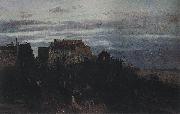 |
Maksymilian Gierymski -- Click Here
|
|
Gierymski (Warsaw 1846 - Reichenhall, Bavaria 1874) was a Polish painter, specializing mainly in watercolours. He was the older brother of painter Aleksander Gierymski.
As a seventeen-years-old boy, he participated in the January Uprising. He was educated at the Warsaw Drawing School initially, but then received a government scholarship in 1867 and went to study at the Academy of Fine Arts in Munich. He became one of the leading painters of the Munich realistic school. Initially best known for this battle paintings, he also created many landscape paintings, especially of southern Poland, which he visited several times.
Successful western Europe completely, he did not gain approval nor popularity in Poland of the 19th century, although he sent paintings to exhibitions in Warsaw regularly from 1968 on. He did however win awards at exhibitions in Munich (1869) and in Berlin (1872).
|
|
 |
Luks, George -- Click Here
|
|
American Ashcan School Painter, 1866-1933 |
|
|